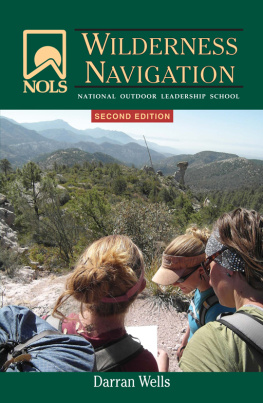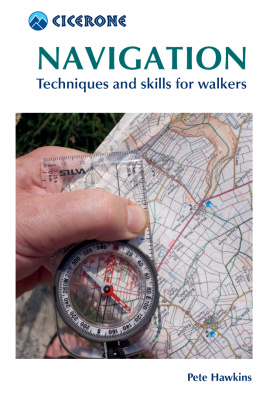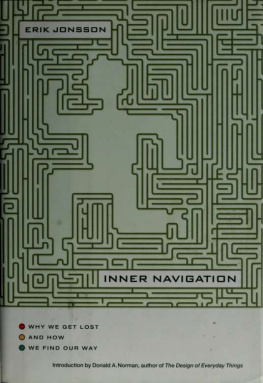Copyright 2005, 2013 by the National Outdoor Leadership School
Published by
STACKPOLE BOOKS
5067 Ritter Road
Mechanicsburg, PA 17055
www.stackpolebooks.com
All rights reserved, including the right to reproduce this book or portions thereof in any form or by any means, electronic or mechanical, including photocopying, recording, or by any information storage and retrieval system, without permission in writing from the publisher. All inquiries should be addressed to Stackpole Books, 5067 Ritter Road, Mechanicsburg, Pennsylvania 17055.
Printed in the United States of America
10 9 8 7 6 5 4 3 2 1
Cover design by Caroline Stover
Cover photograph by Kyle Duba
All illustrations by Jon Cox except as follows: 2, 102: The National Atlas of the United States of America, United States Department of the Interior Geological Survey, 1970, Courtesy of the University of Texas Libraries, The University of Texas at Austin; 3 (top and bottom): iGage; 7: U.S. Geological Survey; 23, 107, 110, 112: U. S. Geological Survey/Caroline Stover; 39: Caroline Stover; 1045: Denis J. Dean, professor of geospatial science, Colorado State University.
The print edition of this title was manufactured to FSC standards using paper from responsible sources
Library of Congress Cataloging-in-Publication Data
Wells, Darran.
NOLS wilderness navigation / Darran Wells ; illustrations by Jon Cox. 2nd ed.
p. cm.
Includes index.
ISBN-13: 978-0-8117-1094-7 (pbk.)
ISBN-10: 0-8117-1094-7 (pbk.)
eISBN: 978-0-8117-4989-3
1. OrienteeringEquipment and supplies. 2. NavigationEquipment and supplies. 3. Outdoor recreationEquipment and supplies. I. National Outdoor Leadership School (U.S.) II. Title. III. Title: National Outdoor Leadership School wilderness navigation.
GV200.4.W45 2013
796.58dc23
2012040324
T his book would never have been written without the support of the staff and students of the National Outdoor Leadership School. Particularly helpful were Drew Leemon, who shared his wisdom and feedback on the initial draft; Joanne Haines and Bruce Palmer, who shepherded the process along through the publication department; Jeanne Obrien, who helped build relationships and make connections with all of the navigation gadget manufacturers; and Adam Swisher, who helped with the final production and layout.
Amy Lerner at Stackpole Books has been great in getting things finalized and making sure balls were not dropped!
Jon Cox is just a great illustrator and all-around good guy. Thanks for your hard work making this book look good.
Ed Crothers of the AMGA shared a wonderful presentation on the secrets of USGS topo maps during the Association of Outdoor Recreation and Education Conference in San Antonio last year.
Many product manufacturers were open and helpful in sharing new technologies with me for this book. Special thanks to James Atkin and the Goal Zero team, the Creative Energies crew, Charlie Conly at Delorme, Ryan Perry at Brunton, Derek Moore at SPOT/Globalstar, Darwin Brown at ACR, and the team at Mophie.
Thanks to the wonderful faculty, staff, and students in the Outdoor Education and Leadership program at Central Wyoming College for their suggestions, support, and time on this project.
Most of all Id like to thank my wife, Stacy, and daughter, Willow, for their patience while I was sitting at the computer instead of climbing and hiking with them last spring.
T he reasons for venturing into the wilderness these days are countless. Glacial mountains, desert canyons, tropical jungles, and even arctic tundra can lift the burden of life in the city or suburbs. Wilderness travelers pursue everything from scientific study to conservation to sports and recreation. Whatever your reasons for leaving the pavement, good navigation skills will make your journey safer and more fun.
The National Outdoor Leadership School (NOLS) has been teaching wilderness navigation to novices and experts alike for more than forty years. With hundreds of professional field instructors drawing on past experience and a thorough knowledge of new technology, NOLS is able to provide the most complete and easy-to-follow land navigation curriculum available today.
How to Use This Book
Whether you are going for a day hike at a local state park, gearing up for a month-long climbing expedition, or learning to navigate for a multiday adventure race, this book is crafted to teach you to get yourself to your destination quickly and efficiently.
While there are other books on land navigation on the market, most are outdated and take a didactic approach: you are expected to learn by reading and by memorizing formulas. At NOLS, we have discovered that students learn to navigate best when they acquire skills sequentially and experientially. Learning to navigate well is more like learning to rock climb than learning to solve algebra problems. It requires that you go outside and practice. NOLS Wilderness Navigation gives you the tools and skills you need in a thoughtful sequence, and it walks you through practical field exercises to help you become a competent and confident navigator. It also uses a light math approach that minimizes math errors commonly made using other navigation techniques.
This book should not be read cover to cover in one sitting. If you are new to backcountry travel, it is important that you follow the sequence of skills carefully. You should achieve competency in the exercises at the end of each chapter before continuing, especially since some of these exercises contain new information that should not be overlooked. Expect to spend several hours or even several days in the field practicing the skills in each chapter before moving on to the next. As with many outdoor skills, practice makes perfect.
If you are a more experienced backcountry navigator, you can use this book as a reference or field guide to review topics of immediate interest. It is filled with tips to help you sharpen your skills with map, compass, altimeter, map software, and GPS. You will also find lists of resources, gear guidance, and useful websites in the back.
This book will not teach you how to plan your food rations, set up a camp, travel in winter, maneuver a sea kayak, explore caves, go horse-packing, climb rock and ice, or any number of other outdoor skills. For these, we suggest taking courses from professional instructors and consulting established reference works.
A Few Definitions
Before getting started, its good to get a handle on some commonly confused jargon.
Navigation is the process of locating a destination and maintaining your direction as you travel toward it. Two important parts of navigation are orientation and routefinding.
Orientation is the process of determining exactly where you are locatedknowing your position on the map and the land that it corresponds toand in which direction you are facing. Successful navigators try to stay oriented at all times. You may be oriented without doing any navigating, but you cant navigate (at least not very well) without being oriented.
Orienteering is the sport of competitive cross-country navigation using a map and compass. See for more on orienteering.
Routefinding means choosing the most efficient path of travel for the group you are leading. Speed, safety, and energy conservation all determine efficiency, and the most efficient route may not be the shortest distance to your destination. is devoted entirely to helping you become a good routefinder.











